MASS Meeting Notes for August 4, 2017
It was a long 9 weeks since the last meeting but we pressed ahead and got our get-together in before the eclipse. Dean, Silvio, Harry, Harry’s friend Denny and myself were in attendance.
There was no main topic tonight but we all looked forward to Harry briefing us on his multiple-day stay at the Oshkosh Air Show. He camped in a tent this time and the rain was a little challenging but at least the temperatures were more manageable. Some highlights were listening to 8 of the Apollo astronauts reminisce about their adventures. Twelve men walked on the moon and fourteen only orbited it. Six of the moon-walkers are still alive and ten of the orbit-only still are with us. All the Apollo astronauts are now in their eighties. I trust the opinion of these men who lived so much history. Jim Lovell weighed in on how the US should go back to the moon to develop and test the systems that will be needed to live and work off the Earth before pressing on to Mars.
The company Blue Origin formed by Jeff Bezos of Amazon was present with their sub-orbital rocket, New Shepard, and 6 person capsule. They hope starting in 2018 to send people up 62 miles on an 11 minute flight with 4 minutes of weightlessness. Competitors are charging $150,000 to $250,000 but Blue Origin has not set a price yet.
We then watched a sample TMRO.tv (pronounced tomorrow) weekly internet program that deals with the same space and astronomy subjects as we do at MASS. TMRO uses crowd-source funding to support their broadcasts. You could contribute as little as 1 penny or typically up to $1, $5 or $10. I understand that TMRO now is getting about $1000/episode of support now. Someday maybe our MASS presentations can get as slick as the ones at TMRO. But I’d be disappointed if we would loose our small town/limited audience flexibility.
Next we watched a short video titled “Wanderers” narrated with the words of Carl Sagan. It still amazes me how eloquent Carl was and it comes as no surprize that he was the premier popularizer of topics in astronomy or science in general.
I presented some of the factoids that I have gleaned from a couple of recently read books. First was “Exoplanets” by Michael Summers and James Trefil. The authors made a point that rogue exoplanets (planets that do not orbit a star) outnumber orbiting planets by a factor between 2 and 100,000. I used to think these planets had no chance for habitability because they couldn’t absorb any energy from a star as they traveled through cold dark space. But the new discovery that moons around these planets could be subject to tidal friction giving them a considerable heat source like Europa around Jupiter. Decay of radioactive elements also could be a contributing heat source. Bottom line, the number of habitable objects in the universe is enormous and our estimates are increasing in number. There also was a discussion about the Fermi Paradox (where are all the aliens?). The authors mentioned that the solution could be that the human race is headed for a great filter that extinguishes advanced civilizations soon after they form. If advanced civilizations do themselves in after only a couple of hundred years, they wouldn’t have time to do much communicating or inter-stellar traveling. The authors also talked about the current thinking on the value of the parameters in the Drake Equation which predicts the number of advanced civilizations in the Milky Way galaxy. Some of the parameters are increasing, like the possibility of life. Factors like moons with subsurface oceans or Kepler finding planets around most stars increase the likelyhood of life. Other factors make life less likely. Such as the need of plate techtonics to recycle carbon dioxide out of the atmosphere of a planet or a Jupiter sized planet wandering inward toward its star and plowing all the small icy bodies to make oceans possible on small rocky planets near their star.
Book number two was “Amazing Stories” by Ron Pyle. The authors list numerous military space projects that never made it off the drawing board. Planned moon military bases from the Army (project Horizon) and the Air Force (project Lunex) give some insight into the Cold-War mentality. Blue Gemini and MOL (Manned Orbiting Laboratory) were attempts to get the military in Earth orbit. There also was a planned rocket called Orion which was going to use atomic bombs exploded just behind it to travel through the Solar System. One problem is that the explosions would create an acceleration of 10,000G’s and turn all inhabitants into a pink goo. The solution was to putting enormous shock absorbers on the vehicle to mitigate the acceleration. One of the more humorous chapters dealt with the development of space based guns. Most of the designs only shot low velocity projectiles or darts. The only need was to puncture the enemy’s space suit. One of the dangers of using these weapons on the moon was that if you missed, you would have to worry about the projectile orbiting the Moon and hitting your own troops in the back. I was also surpised that the Soyuz capsule used to ferry astronauts to the ISS, has a pistol included in the survival supplies in case they are attacked by a bear.
We watched a couple of Uverse clips. The first showed the departure of a Cygnus supply vehicle from the ISS and the launch and berthing of the latest Dragon supply capsule. SpaceX also landed the first stage of their Falcon9 rocket back at the Cape Canaveral which almost overshadowed the launch. Commercial Cargo is really coming into its heyday. SpaceX has had 10 successful and 1 failed missions. Their heaviest lift so far has be 5985 lbs of cargo. They have 9 missions left in in the first phase of Commercial Cargo (COTS1). Their next Dragon supply mission is launching in about a week (August 13, 2017), it will be their last newly manufactured capsule. The remaining 8 missions will use refurbished capsules plucked from the ocean. Orbital that maker of the Cygnus capsule has had 6 successful and 1 failed missions. Their heaviest lift has been 7625 lbs of supplies. Cygnus burns up in the atmosphere on its return and therefore cannot land science result supplies and be reused like Dragon. Orbital has 4 missions remaining in COTS1. The second round of Commercial Cargo (COTS2) is scheduled to begin in 2019 with SpaceX, Orbital and a new third supplier, Sierra Nevada with its DreamChaser vehicle all guarateed at least 6 missions of suppling the ISS. DreamChaser will be fun to watch because it will land like a glider on a runway. This will be a boon to time critical science supplies that must processed quickly.
The other clip was Brian Greene, the quantum physicist, on the Steven Colbert Show. Mr. Greene described how the double slit experiment has opened people’s eyes to the weirdness of the quatum world. He also showed how magnets lowered to minus 300 degree tempertures became super-conducting and reject magnetic fields penetrating them. This enabled a magnet to travel on top of a circular track and incredibly, suspended underneath the track. I still don’t understand how that works but it involves quantum spikes.
Topics discussed:
- Google Lunar X Prize (GLXP) – Four teams in the running to land on the moon by the end of 2017, travel 500 meters and transmit a high-def TV signal back to earth. The prize is $20 million for first, $5 million for second place. The teams are: 1) Team Indus – a scrappy group of Indians many of which are new to aerospace (see the video titled WIRED2016 From Wikipedia to the Moon in Six Years). They will launch on an Indian Polar Satellite Launch Vehicle (PSLV). Their development cost is estimated to be $60 million. 2) Moon Express – an American company which plans to launch from Cape Canaveral on an Electron rocket being developed by Rocket Labs. Their lander will be a hopper to satisfy the travel requirement (see video Moon Express MTV-1X Test Flight). They also have plans to do a future lunar sample return mission. 3) Synergy Moon – an international consortium aiming for cost effective space exploration. They plan to launch on a yet untested Interorbital Systems Neptune rocket. and the last team is 4) Hakuto – a Japanese venture who’s rover will hitch a ride on the Team Indus lander. Astrobotic an American team from Carnegie-Mellon university recently dropped out of the X-prize contest but still plans to launch and land their vehicle in 2019 because it will increase their chances of success.
- Dipole Repeller – Scientists have found a region in the universe that has very little mass so matter in this area seems to be moving away from it (the repelling). There also is a region with a large amount of mass (Shapley Attractor) which is pulling a lot of matter toward it. If you’d like to see it explained in a video check this link. The video also tells us that we are part of the Laniakea super cluster. Laniakea and Dipole Repeller were the new take-away terms for the meeting.
- New attempt to redefine Pluto as a planet – Kirby Runyon and Alan Stern of New Horizon mission presented a paper at the Lunar & Planetary Conference in Houston this March. If the new definition is accepted it will make 102 objects planets. Unclassification of Pluto occurred at the IAU vote in Prague in August 2006 (10 year anniversary of Pluto’s demotion) by only 424 astronomers on the last day of the conference. The IAU definition concentrated on gravitational dominance which determined which 8 bodies qualified. Three criterea had to be satisfied to be a planet. The object had to: 1) orbit the Sun; 2) be massive enough to pull itself into a sphere; and 3) clear its orbit of other objects. Because Pluto didn’t clear its orbit, it was demoted to “dwarf planet” even though it was round. Mike Brown, known as “plutokiller”, says there are 8 big things dominating the solar system and millions of tiny things flitting around. He agrees that orbital dynamics is the most profound classification you can come up with. Neil Degrasse Tyson is against the new definition because Pluto’s path crosses Nepturn’s. Carolyn Porco of Cassini mission said “a classification has to be useful or else it’s just lipstick on a pig”. And the new definition is not useful at all. Runyon used geology for his definition. Whether its in orbit around another body makes no difference. He just used hydrostatic equilibrium to pull itself into a sphere but not start nuclear fusion and become a star. His criterion is purely based on one force, gravity, and one property, mass. People can then divide planets into subcategories like moon planets, rocky planets, gas giant planets and icy planets. Our Moon was considered a planet until the 17th century. The largest asteroid Ceres was a planet when discovered in 1801 but then reclassified as an asteroid when thousands of objects were found in its orbit. I personally like the round and orbit of a star criteria, that seems the most logical to me. Here is a list of small bodies mass in 10^22 kg units in ascending order: 1) Ceres is .09(dwarf planet), 2-11) 10 objects are between .09 and .4 in mass, 12) Makemake(dwarf planet) is .4, 13) Haumea(dwarf planet) .42, 14) Pluto 1.3, 15) Eris(dwarf planet) 1.5, 16) Triton(moon of Neptune) 2.1, 17) Europa(moon of Jupiter) 4.8, 18) the Moon 7.3, 19) Io(moon of Jupiter) 8.9, 20) Callisto(moon of Jupiter) 10.8, 21) Titan(moon of Saturn) 13.5, 22) Ganymede(moon of Jupiter) 14.8, 24) Mercury 33.0 Here is a great diagram showing the relative sizes of Ganymede, Titan, Mercury, Moon, Triton(moon of Neptune), Pluto, Titania(moon of Uranus) & Phobos(moon of Mars) from Astronomy magazine.
- Possible Europa lander for NASA – The US House gives NASA $780 million over White House budget request including support for education programs. The House total for NASA is $19.872 billion. Rep John Culberson (R-Texas) specifies $495 million to be spent on a Europa orbiter and lander in 2022 and 2024. NASA released 264 page report outlining goals of mission that could launch in 2024 with landing in 2031 using SLS rocket. The lander will dig down 10 cm or more and take at least 5 samples of the icy exterior and examine with a microscope that can see cells as small as .2 microns. The extreme radiation coming from Jupiter will fry the craft in about 20 days even though the electronics will be stored in a titanium vault like the Juno mission now orbiting Jupiter.
- SpaceX launches CRS11 supply mission on June 3, 2017 – It launched with 5984 lbs of supplies. With a total of 40 experiments including 400 fluit flies and 2000 fruit fly eggs. Scientists intend to study how the fly’s tubular hearts are affected by low gravity. You can imagine how many fruit fly hearts it takes to have manageable sample for analysis. There are also mice on board to study a substance that encourages bone replacement. This is the first time a reused Dragon capsule (used with CRS-4 mission in Sept 2014) is being sent to the ISS. The first stage of the Falcon9 rocket landed back at landing zone 13 at Cape Canaveral. Other experiments include ROSA is a roll out solar array with 5.5 ft by 15 ft area. MUSES is a platform for future earth observation instruments and NICER to study neutron stars. This is the first time a Chinese experiment will fly to the ISS. It will study the effects of space radiation on DNA and changes in the mutation rate. Previously NASA has been specifically banned from contact with China in regards to space endeavors.
- August 21, 2017 Solar Eclipse – The eclipse is fast approaching. My strategy will be to stay positionally flexible until the 2-day weather forecast shows a good likelyhood of clear skies in an area. Right now western Nebraska seems like a good location. Here are a couple of my favorite websites: 1) Mr. Eclipse’s site has great maps; 2) Eclipsophile has a lot of good information including the 10:30 AM and 1:30 PM likelyhood of clouds along the eclipse path; and 3) SkippySky shows the cloud predictions for the next few days in 3 and 6 hour increments. I also learned at the meeting that Kris McCall, Directory of the planetarium at Triton College was on Chicago Tonight explaining the eclipse.
- Case for Going Back to the Moon – Robert Bigalow, of expandable space modules, reduced the rationale down to a few cartoons. He’s using the Chinese plans for the moon to try to sway the Congress and the US public into action.
- If NASA had the US Military Budget of $600 billion – We can only dream that NASA would be so generously funded. During Apollo NASA was up to 4.5% of the GNP. Now they are only about one tenth of that at .5%.
- Donatello module being turned into a Deep Space Gateway habitat – I didn’t even know NASA was developing a Deep Space Gateway (DSG). The DSG will be in orbit around the moon by the mid 2020’s and function as a staging point for ground robotic and manned lunar missions. It will have ion and chemical thrusters and a crew of four. Donatello is a left-over supply module from Shuttle days. It is a large metal cylinder, 21 ft long and 15 ft in diameter. Refurbishment should only take 18 months and include installation of robotic workstations, exercise and storage spaces for food, water and toiletries. Donatello and two other similar modules, Leonardo and Raffaello, were built by Italian aerospace companies. Leonardo was upgraded with shielding and permanently attached to the ISS.
Topics that I had but we were unable to discuss due to time include:
- Closeups of Saturn – Now that the Cassini spacecraft is ending its mission by diving down below the inner edge of Saturn’s rings, some great closeup shots are coming back. One of the photos show a hexagon cloud pattern at the pole of Saturn with a smaller circular vortex storm at the center. Cassini was launched in October of 1997 and arrived at Saturn in July 2004. Cassini with its Huygens lander was a $3.2 billion mission. It will conduct 22 deep dives coming within 1500 mi of Saturn’s cloud tops before intentionally crashing into Saturn on September 15 of this year. The spacecraft is being destroyed so that it doesn’t contaminate Enceladus, a body that could support life in its sub-surface ocean.
- Astronomers Predict 2 stars will collide in 2022 – There is an error of plus or minus one year but it should be a naked eye red nova in the constellation Cygnus. The stars are in a decaying orbit now with their atmospheres touching and have been monitored since 2013.
- ISS is Getting Its First Commercial Airlock Module in 2019 – This will be the first commercial addition to the ISS. The companies Nanoracks and Boeing are making the $15 million investment. The current Kibo module on ISS has an airlock but it opens only 10 times/ year and 5 of those openings are assigned to the Japanese space agency. The new airlock would be about 5 times larger and would be attached to the Tranquility module that already has the Bigelow inflatable habitat. Nanoracks is working on a launcher than could deploy up to 192 cubesats at a time from the airlock. It would launch on a Dragon capsule. NASA helped foster the Commercial Cargo and Crew business, my hope is they will help to create a commercial space station as the successor to the ISS.
- Air Force Picks SpaceX to Launch the Fifth X-37B Space Plane – The 5th flight of X-37B is expected in August 2017. This will be SpaceX’s 3rd DOD (Department of Defense) launch after they put two GPS satellites in orbit. The Air Force has two of the space planes. Their mission is undefined. As a result of the SpaceX contract news, Alabama complained about the blow to 600 ULA jobs. ULA manufactures the Atlas 5 which was the previous launcher of the space plane. ULA also complained that it was not allowed to bid for the launch. Launch costs were not published because of X-37B’s secrecy.
- NASA picks 12 astronauts from 18,300 applicants – One of the selections, Robb Kulin, grew up in Alaska and worked as engineer for SpaceX on Falcon 9. 5 of the 12 are women. There is a graph on the link showing how many astronauts have been selected over the years. The number is starting to rise again. In 1959, 8 astronauts were selected out of 500 candidates. Starting salary is now $66,026.
- What the Heck is the National Space Council – Mike Pence said the Council will be restored after being disbanded 24 years ago. Pence will head it. Typically it has overseen all American space activities, both NASA and Pentagon. Trump is just the second president since Lyndon Johnson to use it. A former member said it can be a bit of an annoyance for NASA. It is intended to help orient NASA to the President’s interests and came be an unwelcome layer of bureaucracy between it and the President. Scott Pace, current head of George Washington University’s Space Policy Institute, is expected to head the staff. He is a vocal supporter of sending US astronauts back to the moon. I like the “back to the moon” part.
- Smallest Satellite Launched – only 3.5 x 3.5 cm and 4 gm in weight. For comparison an ounce equals 28 grams. It was launched on an Indian rocket and built by the Breakthough Starshot organization which is a $100 million initiative to send robotic missions to nearby stars. The diagram shows the components of the satellite including the radio at bottom, solar panel at top, gyroscope, magnetometer and antenna. Six prototypes called Sprites were launched but so far only one has communicated with the ground station. A short video shows how Starshot will work by firing ground based lasers at a sail attached to the spaceprobe to accelerate it to 20% the speed of light. It will have no way of slowing down as it passes its destination.
- June 30th was Asteroid Day – Video on how a project to move an asteroid got promoted to the design phase. The DART (Double Asteroid Redirection Test) project of NASA will send a probe to a double asteroid called Didymos (780m & 160m in diameter) in 2024. It will smash the refrigerator sized spacecraft into the smaller object at 6km/sec. Asteroid Day celebrates the anniversary of Tunguska event (a comet or asteroid explosion?) which occurred over Russia in 1908. There are now over 16,000 NEOs (Near Earth Objects) discovered. Objects 50 meters and smaller will usually disintegrate producing no damage. About 12,000 of the objects are bigger than 50m. Congress has tasked NASA with the goal of finding 90% of NEOs >140m by 2020. There are probably 20,000 in this category. So far we’ve found about a third of them. Recently, on 2/15/2013 in a town called Chelyabinsk, another asteroid exploded over Russia. The biggest collision concern is for 1 km size objects or larger but we have found 90% of them and none are on a collision course with Earth over next few 100 years.
- Elon Musk of SpaceX Drops the Propulsive Landing for the Dragon v2 Capsule – Musk has stepped back from having Dragon capsule land on its rocket motors citing the difficulty in clearing NASA safety regulations. Dragon’s 3D printed Draco motors will still be used if the capsule needs to be separated from the rocket during launch and all the way until it achieves orbit.
- China is Planning a Lunar Sample Return Mission This Year – Information based upon an article in the June 2017 Planetary Report magazine. The last lunar sample return was in 1976 by the Russians (the US had 6 sample returns from Apollo and Russians had 3 robotic sample returns). The 9 ton Chang’e 5 spacecraft will have a service module, lander, ascent module and return vehicle like Apollo. It will have a robotic docking in lunar orbit, be capable of drilling 2 meters into surface and will return 4 lbs of samples. Its primary landing site is Oceanus Procellarium which has only 1.3 billion year old material versus the Apollo material’s age of 3-4 billion year old. This will be China’s third step in lunar exploration. The Chang’e 1 & 2 orbited and mapped the moon, Chang’e 3 with the Yutu rover (Dec 2013) landed and traveled across the moon. It will launch on Long March 5 rocket in November 2017. The Chinese also are working on the Long March 9 rocket which will be comparable in lift capacity to the Saturn V moon rocket. Future Chinese plans include sample returns from poles and far side or the Moon and a Mars sample return.
The meeting closed at about 10:15 PM. Tentative plans for the next meeting include Dean presenting the SLS rocket and I describing some of the commercial company rockets that may compete with it. We’ll also show the TMRO program that expressed their opinions on whether SLS will be a success and money well spent. Harry also had some information he obtained at the Oshkosh Air Show about a new UBER air people transport service they plan to implement soon. I hope we can meet in September and debrief about our eclipse experiences.
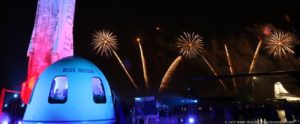
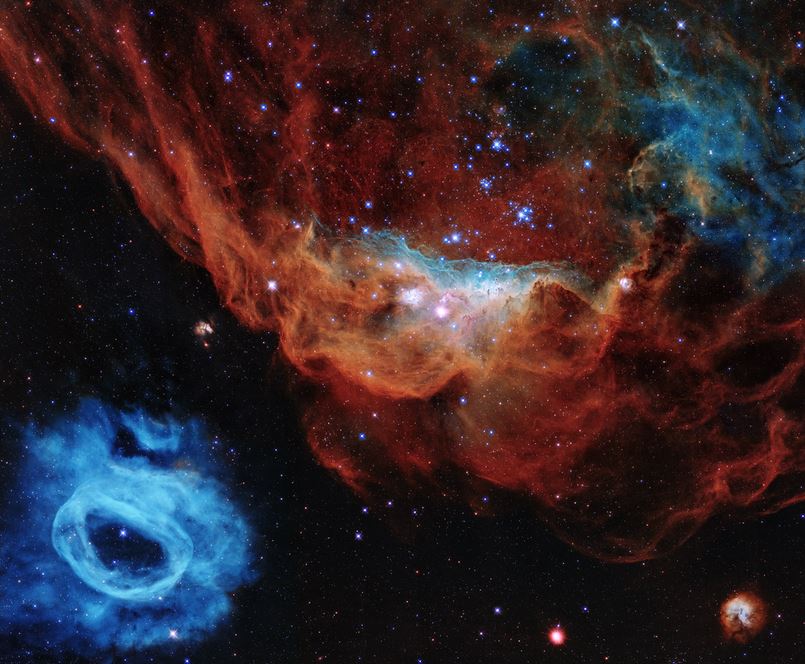
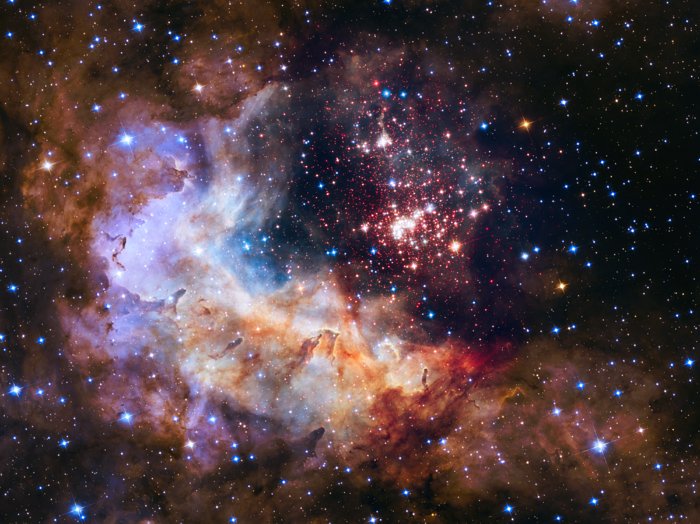
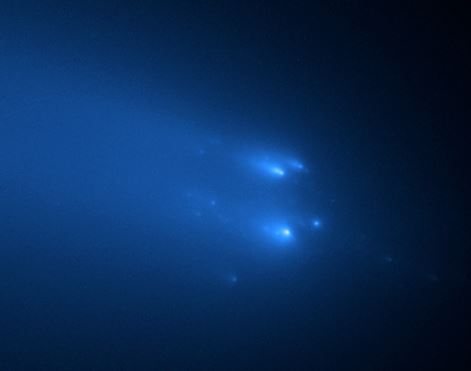
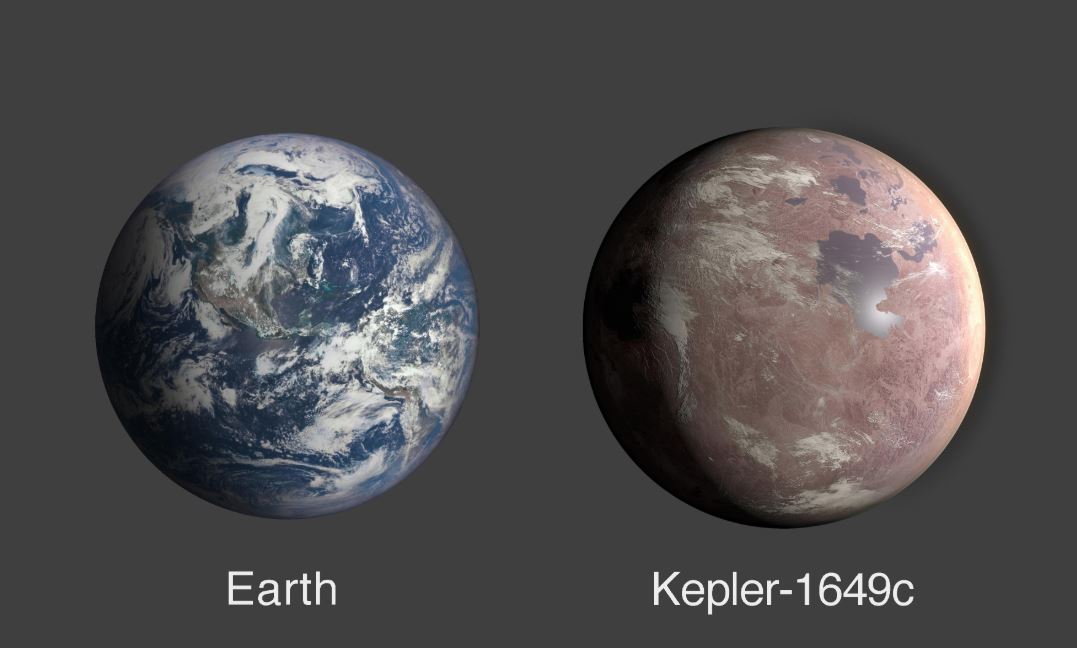
Recent Comments